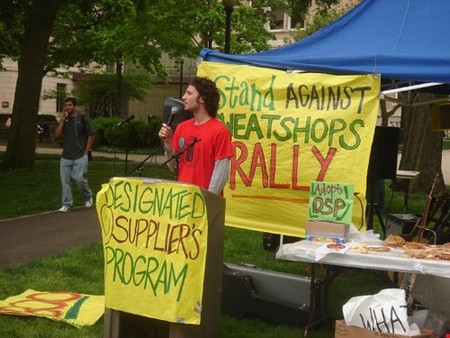| << Chapter < Page | Chapter >> Page > |
While the majority of the world’s poorest countries are in Africa, the majority of the world’s poorest people are in Asia. As in Africa, Asia finds itself with disparity in the distribution of poverty, with Japan and South Korea holding much more wealth than India and Cambodia. In fact, most poverty is concentrated in South Asia. One of the most pressing causes of poverty in Asia is simply the pressure that the size of the population puts on its resources. In fact, many believe that China’s success in recent times has much to do with its draconian population control rules. According to the U.S. State department, China’s market-oriented reforms have contributed to its significant reduction of poverty and the speed at which it has experienced an increase in income levels (U.S. Department of State 2011b). However, every part of Asia is feeling the current global recession, from the poorest countries whose aid packages will be hit, to the more industrialized ones whose own industries are slowing down. These factors make the poverty on the ground unlikely to improve any time soon (World Poverty 2012b).
Poverty rates in some Latin American countries like Mexico have improved recently, in part due to investment in education. But other countries like Paraguay and Peru continue to struggle. Although there is a large amount of foreign investment in this part of the world, it tends to be higher-risk speculative investment (rather than the more stable long-term investment Europe often makes in Africa and Asia). The volatility of these investments means that the region has been unable to leverage them, especially when mixed with high interest rates for aid loans. Further, internal political struggles, illegal drug trafficking, and corrupt governments have added to the pressure (World Poverty 2012c).
Argentina is one nation that suffered from increasing debt load in the early 2000s, as the country tried to fight hyperinflation by fixing the peso to the U.S. dollar. The move hurt the nation’s ability to be competitive in the world market and ultimately created chronic deficits that could only be financed by massive borrowing from other countries and markets. By 2001, so much money was leaving the country that there was a financial panic, leading to riots and ultimately, the resignation of the president.

Most of us don’t pay too much attention to where our favorite products are made. And certainly when you’re shopping for a college sweatshirt or ball cap to wear to a school football game, you probably don’t turn over the label, check who produced the item, and then research whether or not the company has fair labor practices. But for the members of USAS––United Students Against Sweatshops––that’s exactly what they do. The organization, which was founded in 1997, has waged countless battles against both apparel makers and other multinational corporations that do not meet what USAS considers fair working conditions and wages (USAS 2009).
Sometimes their demonstrations take on a sensationalist tone, as in 2006 when 20 Penn State students protested while naked or nearly naked, in order to draw attention to the issue of sweatshop labor. The school is actually already a member of an independent monitoring organization called Worker Rights Consortium (WRC) that monitors working conditions and works to assist colleges and universities with maintaining compliance with their labor code. But the students were protesting in order to have the same code of conduct applied to the factories that provide materials for the goods, not just where the final product is assembled (Chronicle of Higher Education 2006).
The USAS organization has chapters on over 250 campuses in the United States and Canada and has waged countless campaigns against companies like Nike and Forever 21 apparel, Taco Bell restaurants, and Sodexo food service. In 2000, members of USAS helped to create WRC. Schools that affiliate with WRC pay annual fees that help offset the organization’s costs. Over 180 schools are affiliated with the organization. Yet, USAS still sees signs of inequality everywhere. And the members feel that, as current and future workers, it is within their scope of responsibility to ensure that workers of the world are treated fairly. For them, at least, the global inequality that we see everywhere should not be ignored for a team spirit sweatshirt.

Notification Switch
Would you like to follow the 'Introduction to sociology' conversation and receive update notifications?